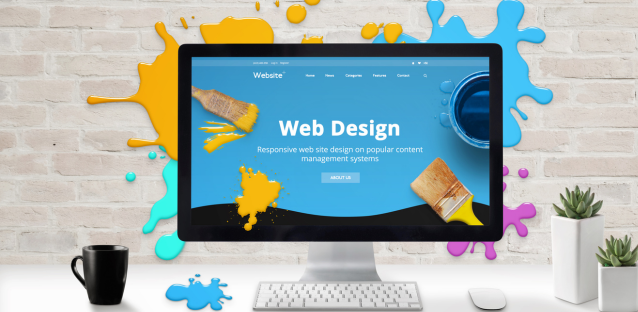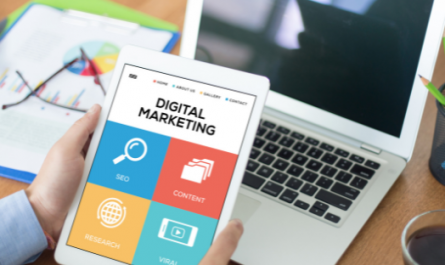Web design is a dynamic realm, ever-evolving to meet changing user expectations and technological advancements. Staying current with the latest trends is not just a choice but a necessity for businesses seeking to make a lasting impact in the digital landscape.
Partnering with an experienced web agency in London can help your businesses stay upbeat and adapt to the cutting-edge trends that define the contemporary web design scene. Let us explore these and why businesses should actively embrace them for a competitive edge.
#1 Minimalist Design
Minimalist design, characterized by simplicity and elegance, has become a hallmark of modern web design. The deliberate use of negative space, a limited color palette, and clean lines contribute to a streamlined and visually appealing aesthetic. Examples of successful minimalist websites, such as Apple’s product pages or Google’s search interface, showcase how simplicity can be a powerful design choice.
The philosophy of decluttering and prioritizing essential elements is at the core of minimalist design. This simplicity enhances the overall aesthetics and significantly improves the user experience. Users can navigate more intuitively, focusing on the core content without distractions. Balancing minimalism with effective information delivery is crucial, ensuring simplicity doesn’t compromise the communication of key messages.
In an era dominated by mobile devices, the importance of mobile responsiveness cannot be overstated. The minimalist design seamlessly aligns with the requirements of mobile responsiveness, providing an optimal viewing and interaction experience across various devices. The principles of minimalism naturally lend themselves to mobile interfaces, allowing content to adapt gracefully to different screen sizes while maintaining a consistent brand identity.
#2 Dark Mode Integration
Dark mode has emerged as more than just a trend; it’s a design choice combining aesthetic appeal with user comfort considerations. The dark color scheme not only adds a touch of sophistication to websites but also addresses the issue of eye strain. Reducing screen brightness is particularly beneficial during low-light conditions, improving readability and reducing eye fatigue.
The integration of dark mode is a response to changing user preferences. Many users now actively seek platforms that offer a dark mode option due to its visual appeal and potential health benefits. Offering dark mode isn’t just a design choice; it’s a response to user needs. Additionally, it can positively impact brand image by showcasing a commitment to user-centric design and staying in tune with contemporary aesthetics.
#3 3D Elements and Illustrations
Including 3D elements in web design serves a dual purpose – it adds a layer of visual depth and enhances user engagement. 3D visuals can create a sense of realism, making the online experience more immersive. Whether it’s a product showcase or a website’s overall theme, 3D elements create a dynamic and interactive environment, keeping users captivated.
Illustrations have transcended their decorative role and now play a vital part in web storytelling. They have become a powerful tool for conveying a brand’s narrative, values, or product features. Unlike stock photos, custom illustrations allow businesses to infuse personality and uniqueness into their web design. This personal touch can resonate more deeply with visitors, fostering a connection between the brand and its audience.
The integration of dark mode and the incorporation of 3D elements and illustrations showcase the evolution of web design beyond mere functionality. These trends represent a conscious effort to enhance user experiences, cater to diverse preferences, and communicate brand stories more visually compellingly. As businesses navigate the digital landscape, these design elements offer opportunities for differentiation and creating memorable online interactions.
#4 Microinteractions
Microinteractions, though small in scale, significantly impact user engagement. These subtle animations and responses to user actions create a dynamic and responsive user interface. From a button changing color on hover to a notification animation, these micro-interactions create a more interactive and enjoyable browsing experience, keeping users engaged with the website.
One of the key functionalities of micro-interactions is to provide instant feedback to users. These small visual cues offer feedback on user actions, whether acknowledging a click, indicating loading, or confirming a form submission. Additionally, microinteractions guide users through the website, providing hints and visual cues that enhance the overall user experience.
#5 AI-Powered Chatbots
AI-powered chatbots are revolutionizing user interaction by offering a personalized touch. These chatbots can understand user preferences, behaviors, and history through machine learning algorithms. This enables them to provide tailored recommendations, assistance, and responses, creating a more personalized and human-like interaction.
The efficiency of AI-powered chatbots lies in their ability to handle many user queries simultaneously, improving response times and overall customer service. Moreover, these chatbots operate round the clock, offering 24/7 availability. This is particularly advantageous for businesses with a global audience, as users from different time zones can receive instant assistance, contributing to enhanced user satisfaction.
#6 Sustainability in Web Design
Sustainability in web design is a growing trend emphasizing digital presence’s environmental impact. Green hosting, which uses servers powered by renewable energy sources, is gaining popularity. Additionally, eco-friendly practices in web development, such as optimizing website performance to reduce energy consumption, contribute to a more sustainable online ecosystem.
Embracing sustainability practices in web design goes beyond environmental consciousness; it also positively impacts brand reputation. In an era where consumers are increasingly environmentally conscious, businesses adopting sustainable web design practices signal their commitment to responsible corporate citizenship. This contributes to a positive brand image and meets the expectations of users who prioritize eco-friendly choices.
Conclusion
The cutting-edge web design trends above collectively represent a shift toward more user-centric, interactive, and sustainable online experiences. Minimalist design, dark mode integration, 3D elements, micro-interactions, AI-powered chatbots, and sustainability practices shape the digital landscape, providing businesses with innovative tools to enhance user engagement and stay competitive.
As technology continues to evolve, the field of web design will undoubtedly see new trends and innovations. The key for businesses is to adopt the latest trends and stay adaptable and responsive to emerging technologies. The future of web design will likely involve further advancements in user personalization, the integration of immersive technologies, and an even greater emphasis on sustainability.
As businesses navigate the ever-evolving realm of web design, staying informed and embracing these trends will be crucial for maintaining a modern and competitive online presence. By doing so, businesses can meet the expectations of contemporary users and stay ahead of the curve in the dynamic world of digital experiences.

